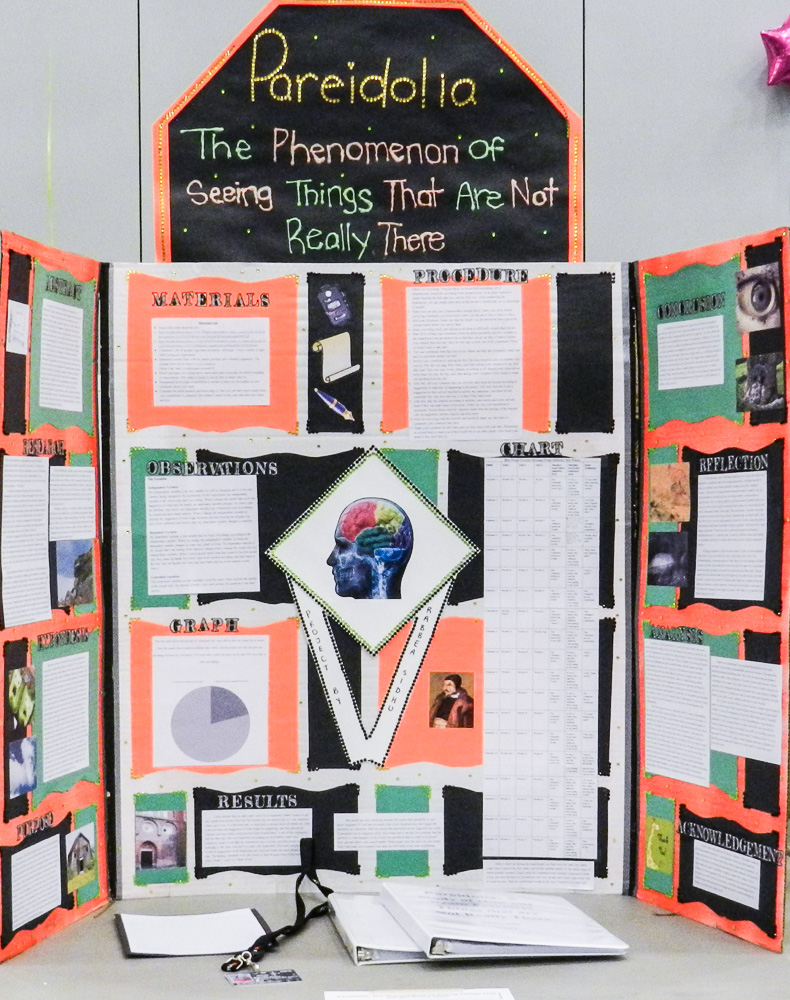| Abstract |
The purpose of this science fair project is to get to know a little more about our brains. Most of the time, we ignore the research behind simple things such as seeing stars in your vision when you rub your eyes, or an even simpler example is why we laugh. So I decided that I would research on something that happens often, but most of us don’t know the reason to it, and that is a concept known as pareidolia. Pareidolia occurs when our brains recognize patterns and shapes in random noise and images. E.g. Seeing a face in the moon, or mistaking hearing a doorbell. Now pareidolia is absolutely fine, it is a trait that everyone has, but my focus is putting it to the test, and digging up some further knowledge. I am wanting to test pareidolia by giving sound clips for volunteers to hear, and to record what they can get from the sound clip. If my hypothesis proves true, this will strengthen my initial point, that pareidolia is everywhere and you can put to the test, using very simple arbitrary sine waves. However, I will also use this information to dig deeper into pareidolia, because seeing illusions can’t be all too great. It must have some sort of downside like maybe seeing unwanted hallucinations. So I am basically trying to find out the further consequences of pareidolia, using the information obtained from an experiment and more research from books and websites. If our brains are aching with this need to fill the void of the unknown, then maybe half of these legends, stories and myths that we are telling are all fake, hallucinations. If our brains would go as far as even crafting an all artificial world to make sense of everything around us, then maybe we already have done so. The legends of bigfoot, lochness monster etc, may all be reasons of pareidolia. So I want to know how far pareidolia can really reach before it is considered a mental disorder, or basically, a health issue. How far can pareidolia take you before it ruins your sense of right and wrong? And the best part about my project is that I can easily apply this research to the real world. You see, pareidolia is a trait found in everyone, and so what can start as simple hallucinations that are completely normal, may turn into something much more serious, and I think it is important for all of us to be aware. It’s also really cool to learn about pareidolia because it is fascinating to see what your brain is capable of. I would think that anyone would be interested to know more about themselves. Besides, I’m doing a lot of research, who knows what I can find?
|

